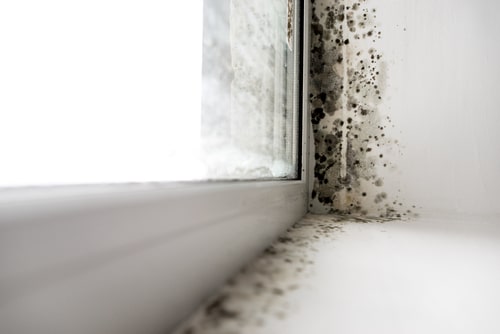
26 Apr. 18
The Effect of High Humidity Within a Property
You already know that a leaky roof or pipes can lead to moisture damage in a building, but high humidity levels are also dangerous. While you may feel the effects from high humidity in a building, the moisture in the hidden areas of the home or business is the real problem. Here are some of the problems associated with high humidity in a building.
Condensation On a Building’s Materials
If a building is humid, then condensation will develop on a variety of surfaces, and the moisture from the condensation seeps into the wood, drywall and other building materials. The moisture that seeps into a building’s materials can lead to expansion of the wood in a building’s frame. This expansion affects the integrity of a building’s frame, leading to problems that can cause decay in the drywall and wood.
Corrosion Of the Metal Materials In a Building
When condensation occurs on the metal materials in a building, the items begin to corrode. Your building’s wooden frame will have metal objects such as nails, screws or fasteners, and as these items rust, your building’s wooden frame will begin to shift. If you have metal corrosion in a building, then you might see cracks in the ceilings or walls of your home. Corrosion from condensation will also affect the electrical system in a building, leading to brownouts or electrical fires.
Peeling Paint and Stains On the Drywall
If you notice peeling paint or stains on the drywall of a building, then it is frequently caused by a high humidity level. The moisture from humidity might settle on the exterior surfaces of a building, but the moisture can also collect inside the wall spaces. As the insulation and underlying materials in a building become damp, the moisture seeps through the drywall, leading to water stains and peeling paint.
Mold Growth On Any Type Of Building Material
Mold spores are on all of the surfaces of a building, and when the spores are moist, the mold begins to spread. There are many mold species, and some of these species of mold are dangerous to live and work around. You might see fuzzy or slimy mold growth on the exterior materials of a building, but most mold growth is on hidden surfaces, including between the walls or in the ductwork. Not only is it dangerous to breathe the air that is contaminated with mold, but also, the mold growth damages a building’s materials.
Mildew Odors That Permeate a Building’s Materials
When a building has a musty odor, it probably has mold growth that creates mildew odor. This mildew odor can permeate the materials in a building, and in many cases, it is impossible to eliminate the problem. Fortunately, you can call a home restoration company that will have air cleaning equipment, industrial-strength dehumidifiers and specialized cleansers to reduce the humidity in a building along with eliminating foul odors and dangerous mold.
